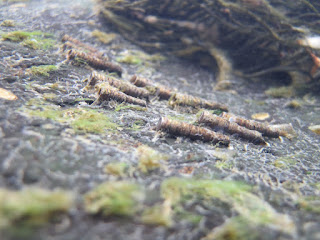
The Gunpowder River still looks and feels almost pristine, even though it flows through some of the most developed real estate in the east. Its steep sided valley is largely protected in state park. It is a river in my region, like many, that I have explored little from beneath the surface. It is a river I want to spend more time with, to learn it.
I pulled into the parking lot of the old Monkton Train station on the NCR trail, and saw a wader wash. Not a good sign. I knew didymo was in the Gunpowder, but I didn’t know it was in this section.
Didymo is a diatomaceous alga that is originally from northern Europe and Asia, it has spread world wide. It coats everything in the stream with a thick dark olive brown mucous like material, hence its common name, rock snot. Since it smothers the stream bottom, it kills aquatic insects and robs the stream of diverse habitat which translates into less fish diversity. The ironic thing about didymo is the people degrading streams by spreading the algae are the same ones who probably love creeks the most. Pieces of didymo can become attached to waders (or snorkeling gear). When the fisherman (or I) steps into a different stream the didymo washes off and can infect the new stream.
I had another more critical trip planned for this afternoon to check on the progress of the spring herring run in another stream. This afternoons trip was more critical than this Gunpowder exploration since the herring are only in our streams for a short while and I can explore the Gunpowder any time. I wouldn’t be able to thoroughly decontaminate my gear between swims so I chose to not get into the gunpowder. I didn’t want to risk spreading didymo.
The sections of the gunpowder infested with didymo aren’t less valuable or less special. This is far from a river to give up on, so I will be back to explore, didymo and all




